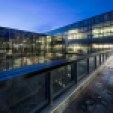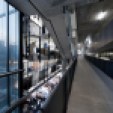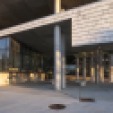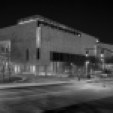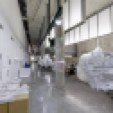iPhone 7 Plus: Three Days, One Night on High Street. © Tim Jacoby.
The Flâneur and Mobile Photography
“What’s really important is to simplify. The work of most photographers would be improved immensely if they could do one thing: get rid of the extraneous. If you strive for simplicity, you are more likely to reach the viewer. ”
— William Albert Allard
COLUMBUS—When I shot my first video of Knowlton Hall, Ohio State’s large, spatially and sectionally complex “encyclopedia” of architectural effect, I was limited both by the low resolution of my camera and my inability to move it through the building by any other means than a nearly impossible to control Steadicam. Architecture, perhaps more than all other arts, requires the participant to move to fully appreciate the artistry of the structure. It is primarily through movement that our understanding of architecture becomes less formal, less idealized, and more experiential. Compared to our interaction with a plan and section or axonometric drawings or photographs, it is through movement that we best understand architecture as promenade, as an unfolding of space through time.


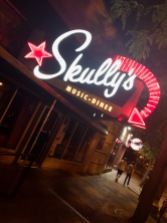




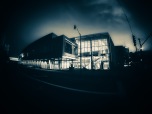


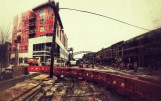


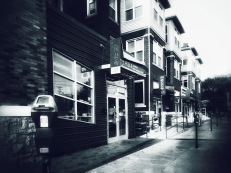













____________________________________________________________________
The Flâneur and Mobile Photography
To me, photography is an art of observation. It’s about finding something interesting in an ordinary place… I’ve found it has little to do with the things you see and everything to do with the way you see them.”
— Elliott Erwitt
COLUMBUS—Synchronous Objects (2009) was the result of a collaborative process, involving choreographer William Forsythe and the Forsythe Company, Frankfurt, and researchers from the departments of Dance, Design, Computer Science, Geography, Statistics, and Architecture at The Ohio State University. The project’s participants examined Forsythe’s complex ensemble dance work One Flat Thing, reproduced, searching for ways to visualize the methods of choreographic organization. Lacking a musical score, dancers instead rely on intricate systems of cues from others in the troupe that trigger their own reactions, whose reactions further trigger the reactions of other dancers, and so forth. Transcription of this complicated system of interlocking structures using traditional methods—which are often of limited value even in less-involved dance compositions—was discarded. Merging art and science, collaborators created a number of experimental, data-based visualizations that revealed complex, subtle, and connected patterns hidden not only to the audience, but almost certainly to the dancers and choreographer as well.
My work on this project was centered on the concept of “trace,” or the ghost-like persistence of bodies in time, lingering for a moment in the spaces just evacuated by the dancers. Similar to the animation process of onion-skinning, each dancer would leave behind slowly fading after-images from their previous positions, revealing not only a less truncated view of their individual movement histories, but superimpositions and overlap with others not possible in traditional forms of representation. What this captured was not only the surprisingly vivid organic geometries generated as the dancers arc through time and space, but a very graphic representation of their speed and velocity in the manner of Étienne-Jules Marey’s chronophotography.
















The Flâneur and Mobile Photography
“A picture is a secret about a secret, the more it tells you the less you know.”
— Diane Arbus
COLUMBUS—Synchronous Objects (2009) was the result of a collaborative process, involving choreographer William Forsythe and the Forsythe Company, Frankfurt, and researchers from the departments of Dance, Design, Computer Science, Geography, Statistics, and Architecture at The Ohio State University. The project’s participants examined Forsythe’s complex ensemble dance work One Flat Thing, reproduced, searching for ways to visualize the methods of choreographic organization. Lacking a musical score, dancers instead rely on intricate systems of cues from others in the troupe that trigger their own reactions, whose reactions further trigger the reactions of other dancers, and so forth. Transcription of this complicated system of interlocking structures using traditional methods—which are often of limited value even in less-involved dance compositions—was discarded. Merging art and science, collaborators created a number of experimental, data-based visualizations that revealed complex, subtle, and connected patterns hidden not only to the audience, but almost certainly to the dancers and choreographer as well.
My work on this project was centered on the concept of “trace,” or the ghost-like persistence of bodies in time, lingering for a moment in the spaces just evacuated by the dancers. Similar to the animation process of onion-skinning, each dancer would leave behind slowly fading after-images from their previous positions, revealing not only a less truncated view of their individual movement histories, but superimpositions and overlap with others not possible in traditional forms of representation. What this captured was not only the surprisingly vivid organic geometries generated as the dancers arc through time and space, but a very graphic representation of their speed and velocity in the manner of Étienne-Jules Marey’s chronophotography.












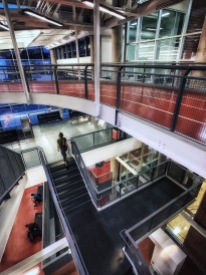




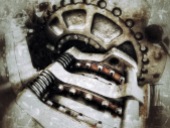








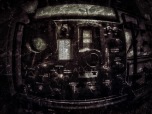





















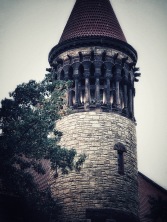


















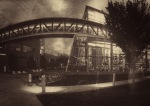

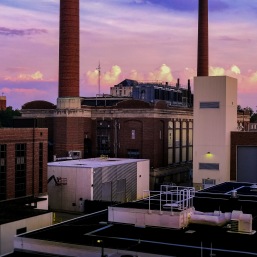





The Flâneur and Mobile Photography
“In an initial period, Photography, in order to surprise, photographs the notable; but soon, by a familiar reversal, it decrees notable whatever it photographs. The ‘anything whatever’ then becomes the sophisticated acme of value.”
— Roland Barthes, Camera Lucinda: Reflections on Photography
COLUMBUS—Synchronous Objects (2009) was the result of a collaborative process, involving choreographer William Forsythe and the Forsythe Company, Frankfurt, and researchers from the departments of Dance, Design, Computer Science, Geography, Statistics, and Architecture at The Ohio State University. The project’s participants examined Forsythe’s complex ensemble dance work One Flat Thing, reproduced, searching for ways to visualize the methods of choreographic organization. Lacking a musical score, dancers instead rely on intricate systems of cues from others in the troupe that trigger their own reactions, whose reactions further trigger the reactions of other dancers, and so forth. Transcription of this complicated system of interlocking structures using traditional methods—which are often of limited value even in less-involved dance compositions—was discarded. Merging art and science, collaborators created a number of experimental, data-based visualizations that revealed complex, subtle, and connected patterns hidden not only to the audience, but almost certainly to the dancers and choreographer as well.
My work on this project was centered on the concept of “trace,” or the ghost-like persistence of bodies in time, lingering for a moment in the spaces just evacuated by the dancers. Similar to the animation process of onion-skinning, each dancer would leave behind slowly fading after-images from their previous positions, revealing not only a less truncated view of their individual movement histories, but superimpositions and overlap with others not possible in traditional forms of representation. What this captured was not only the surprisingly vivid organic geometries generated as the dancers arc through time and space, but a very graphic representation of their speed and velocity in the manner of Étienne-Jules Marey’s chronophotography.
The Flâneur and Mobile Photography
“While there is perhaps a province in which the photograph can tell us nothing more than what we see with our own eyes, there is another in which it proves to us how little our eyes permit us to see.”
— Dorothea Lange
COLUMBUS—Synchronous Objects (2009) was the result of a collaborative process, involving choreographer William Forsythe and the Forsythe Company, Frankfurt, and researchers from the departments of Dance, Design, Computer Science, Geography, Statistics, and Architecture at The Ohio State University. The project’s participants examined Forsythe’s complex ensemble dance work One Flat Thing, reproduced, searching for ways to visualize the methods of choreographic organization. Lacking a musical score, dancers instead rely on intricate systems of cues from others in the troupe that trigger their own reactions, whose reactions further trigger the reactions of other dancers, and so forth. Transcription of this complicated system of interlocking structures using traditional methods—which are often of limited value even in less-involved dance compositions—was discarded. Merging art and science, collaborators created a number of experimental, data-based visualizations that revealed complex, subtle, and connected patterns hidden not only to the audience, but almost certainly to the dancers and choreographer as well.
My work on this project was centered on the concept of “trace,” or the ghost-like persistence of bodies in time, lingering for a moment in the spaces just evacuated by the dancers. Similar to the animation process of onion-skinning, each dancer would leave behind slowly fading after-images from their previous positions, revealing not only a less truncated view of their individual movement histories, but superimpositions and overlap with others not possible in traditional forms of representation. What this captured was not only the surprisingly vivid organic geometries generated as the dancers arc through time and space, but a very graphic representation of their speed and velocity in the manner of Étienne-Jules Marey’s chronophotography.
















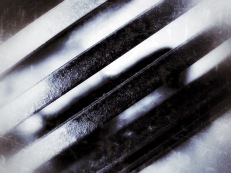
The Flâneur and Mobile Photography
“The painter constructs, the photographer discloses.”
— Susan Sontag, On Photography
COLUMBUS—Synchronous Objects (2009) was the result of a collaborative process, involving choreographer William Forsythe and the Forsythe Company, Frankfurt, and researchers from the departments of Dance, Design, Computer Science, Geography, Statistics, and Architecture at The Ohio State University. The project’s participants examined Forsythe’s complex ensemble dance work One Flat Thing, reproduced, searching for ways to visualize the methods of choreographic organization. Lacking a musical score, dancers instead rely on intricate systems of cues from others in the troupe that trigger their own reactions, whose reactions further trigger the reactions of other dancers, and so forth. Transcription of this complicated system of interlocking structures using traditional methods—which are often of limited value even in less-involved dance compositions—was discarded. Merging art and science, collaborators created a number of experimental, data-based visualizations that revealed complex, subtle, and connected patterns hidden not only to the audience, but almost certainly to the dancers and choreographer as well.
My work on this project was centered on the concept of “trace,” or the ghost-like persistence of bodies in time, lingering for a moment in the spaces just evacuated by the dancers. Similar to the animation process of onion-skinning, each dancer would leave behind slowly fading after-images from their previous positions, revealing not only a less truncated view of their individual movement histories, but superimpositions and overlap with others not possible in traditional forms of representation. What this captured was not only the surprisingly vivid organic geometries generated as the dancers arc through time and space, but a very graphic representation of their speed and velocity in the manner of Étienne-Jules Marey’s chronophotography.



























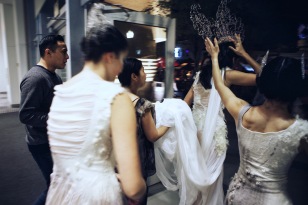








The Flâneur and Mobile Photography
“Most people feel that the world looks like the photograph. I’ve always assumed that the photograph is nearly right, but that little bit by which it misses makes it miss by a mile. This is what I grope at.”
— Martin Gayford, A Bigger Message: Conversations with David Hockney
COLUMBUS—Synchronous Objects (2009) was the result of a collaborative process, involving choreographer William Forsythe and the Forsythe Company, Frankfurt, and researchers from the departments of Dance, Design, Computer Science, Geography, Statistics, and Architecture at The Ohio State University. The project’s participants examined Forsythe’s complex ensemble dance work One Flat Thing, reproduced, searching for ways to visualize the methods of choreographic organization. Lacking a musical score, dancers instead rely on intricate systems of cues from others in the troupe that trigger their own reactions, whose reactions further trigger the reactions of other dancers, and so forth. Transcription of this complicated system of interlocking structures using traditional methods—which are often of limited value even in less-involved dance compositions—was discarded. Merging art and science, collaborators created a number of experimental, data-based visualizations that revealed complex, subtle, and connected patterns hidden not only to the audience, but almost certainly to the dancers and choreographer as well.
My work on this project was centered on the concept of “trace,” or the ghost-like persistence of bodies in time, lingering for a moment in the spaces just evacuated by the dancers. Similar to the animation process of onion-skinning, each dancer would leave behind slowly fading after-images from their previous positions, revealing not only a less truncated view of their individual movement histories, but superimpositions and overlap with others not possible in traditional forms of representation. What this captured was not only the surprisingly vivid organic geometries generated as the dancers arc through time and space, but a very graphic representation of their speed and velocity in the manner of Étienne-Jules Marey’s chronophotography.
















